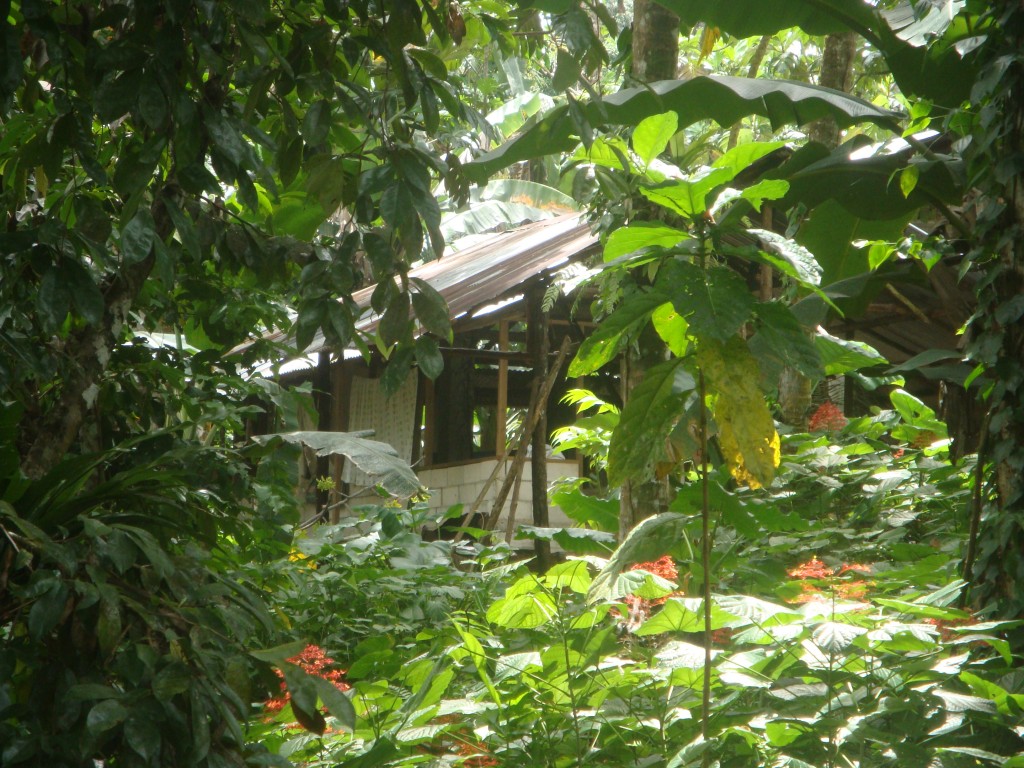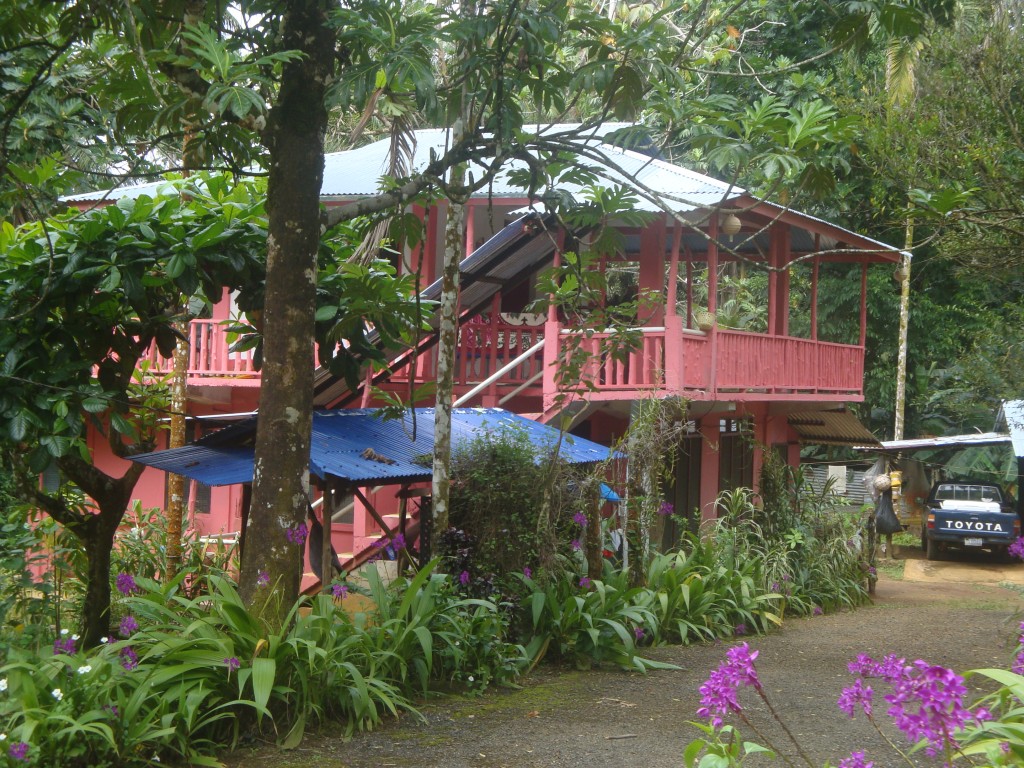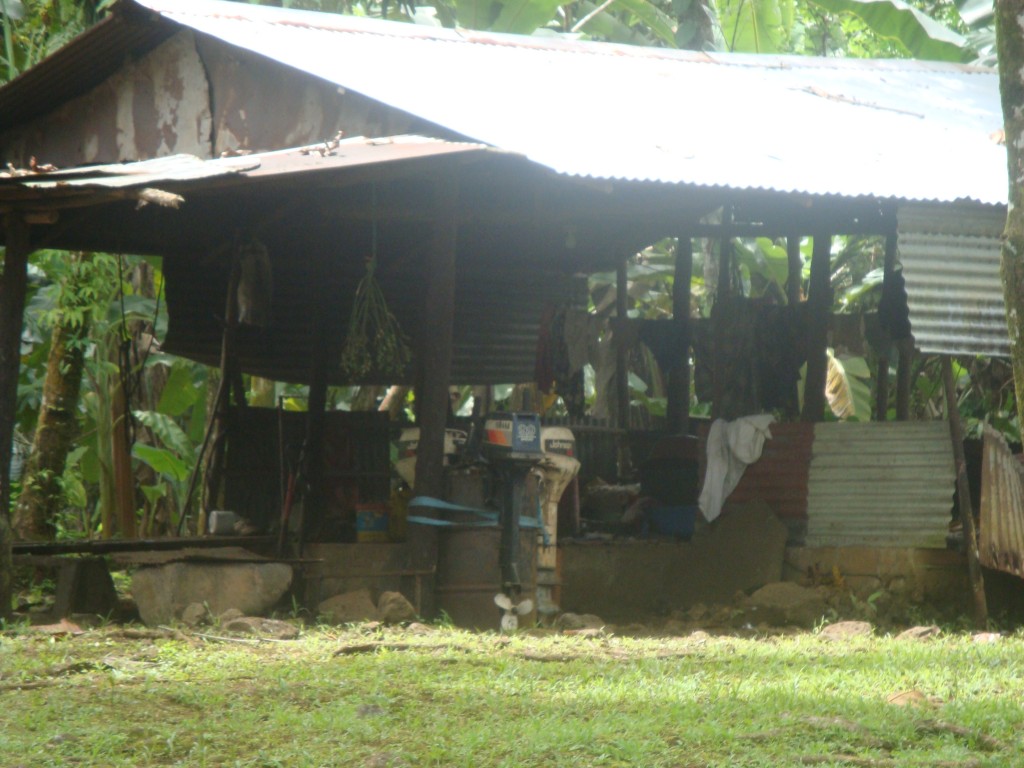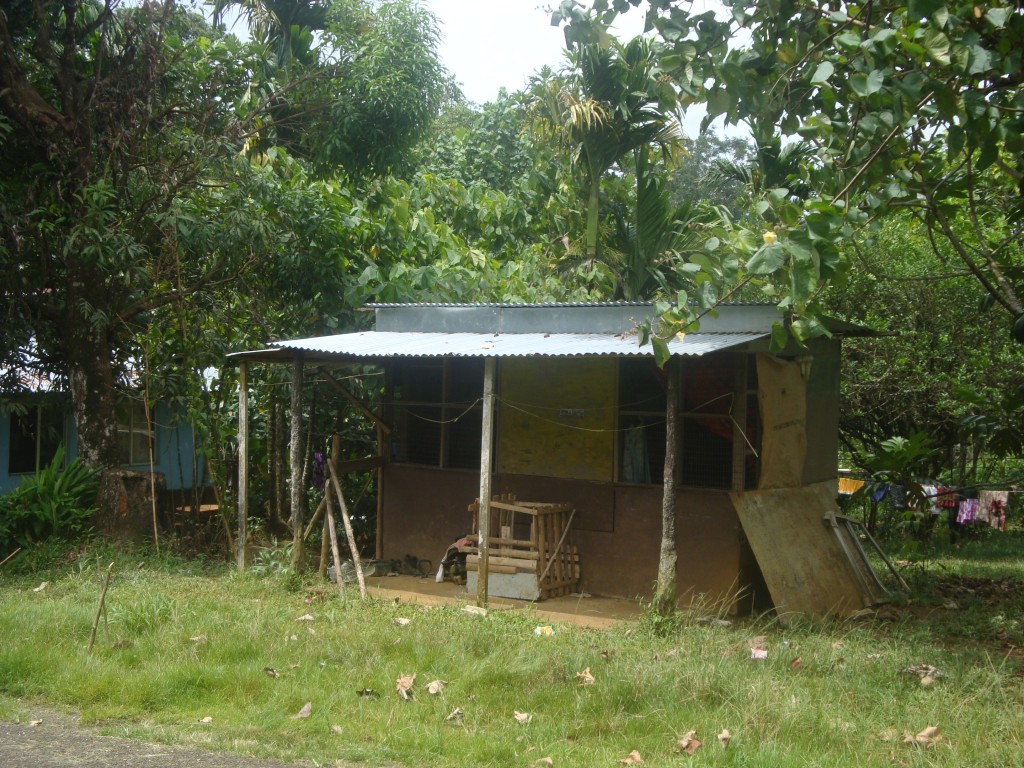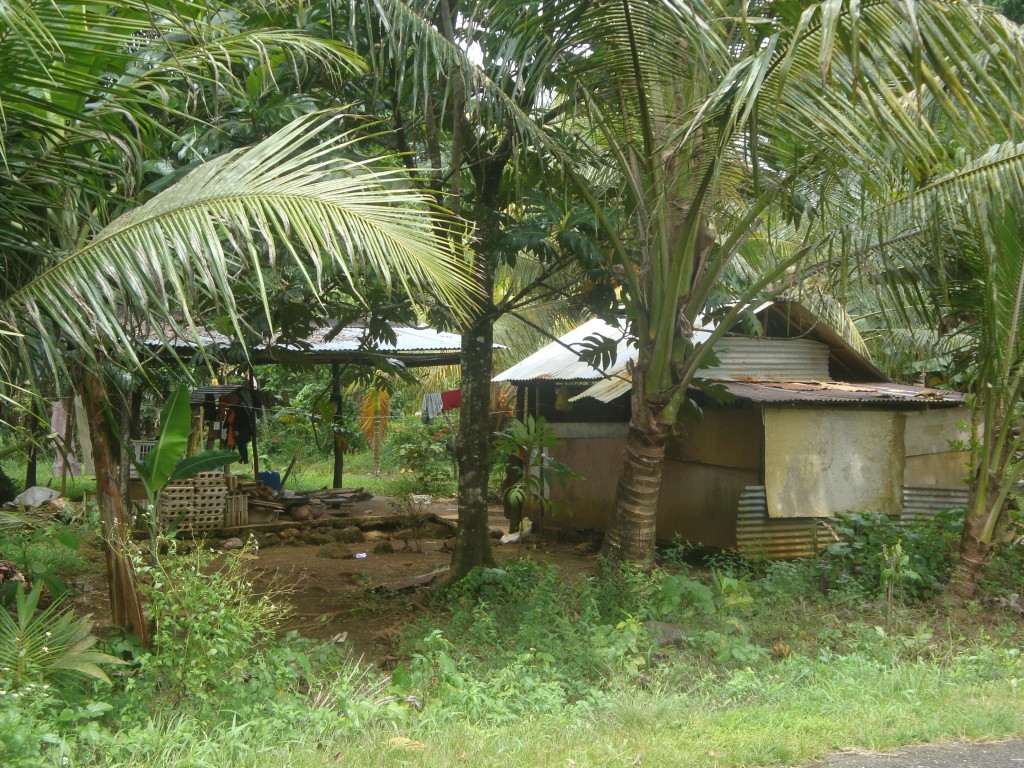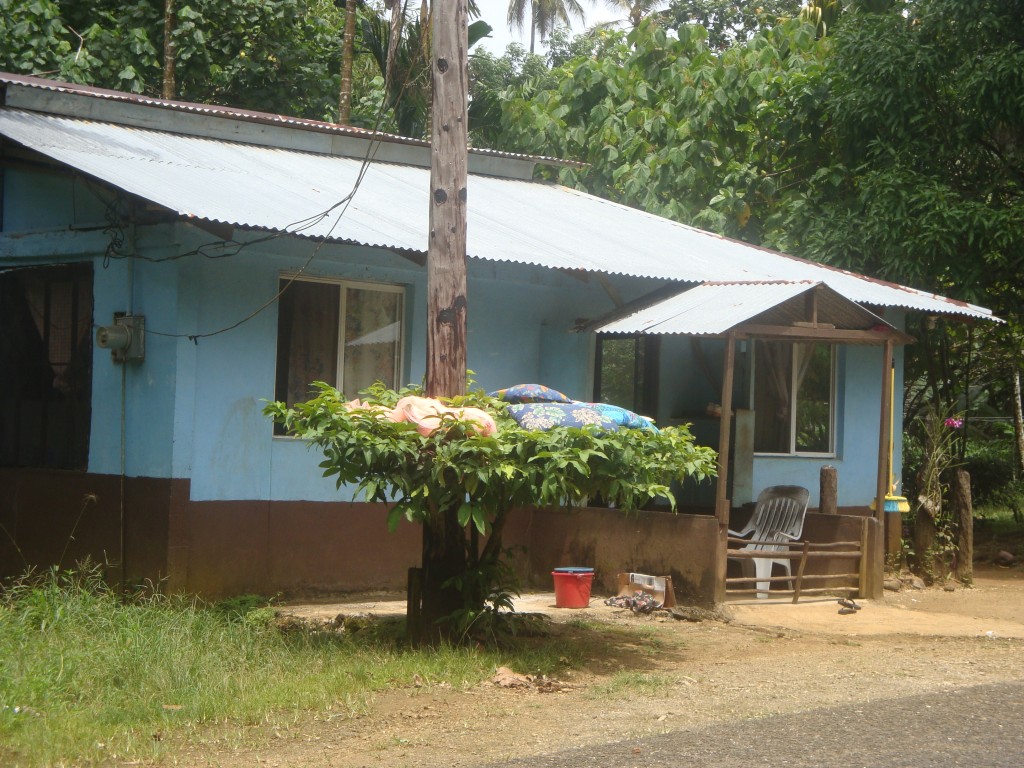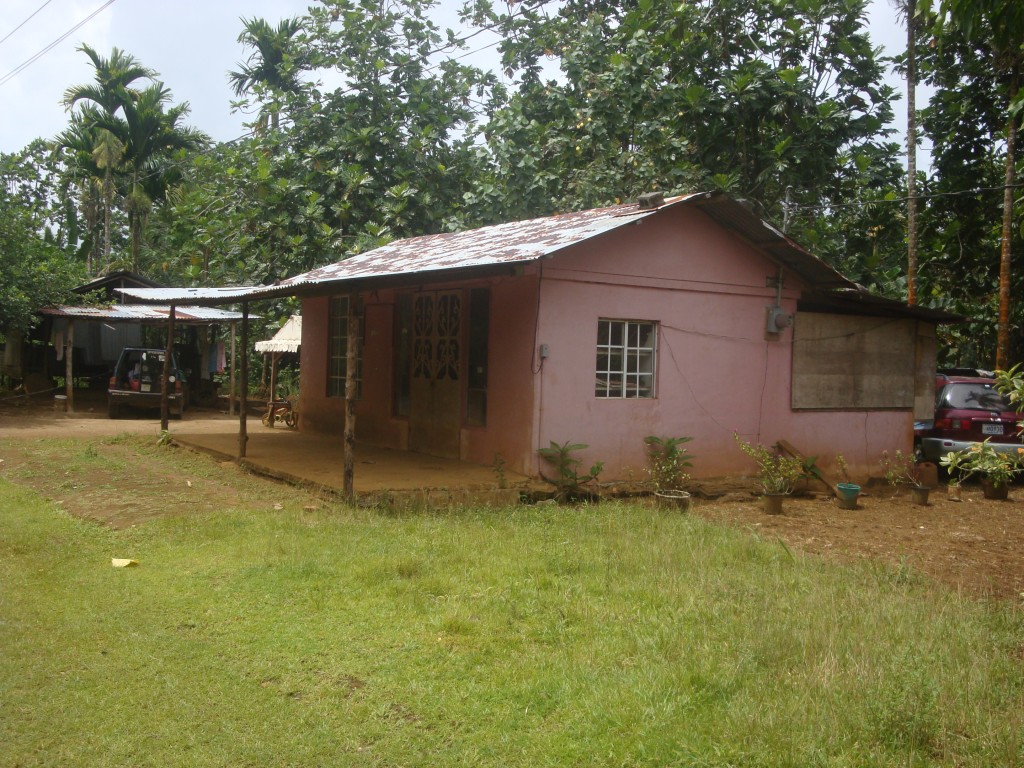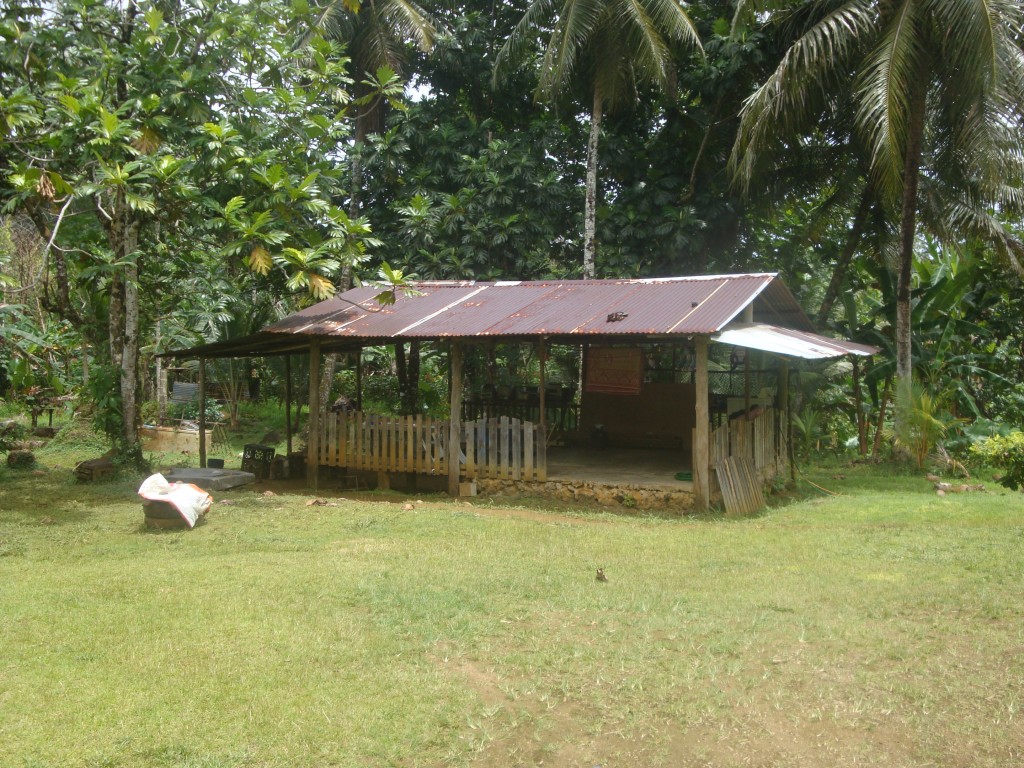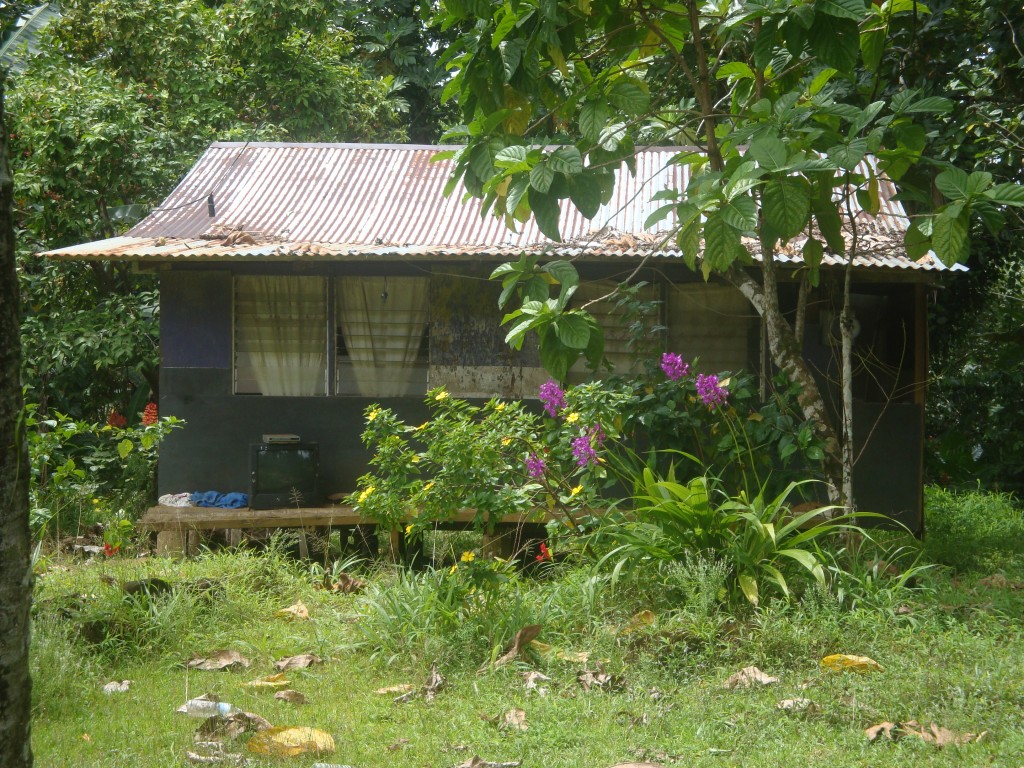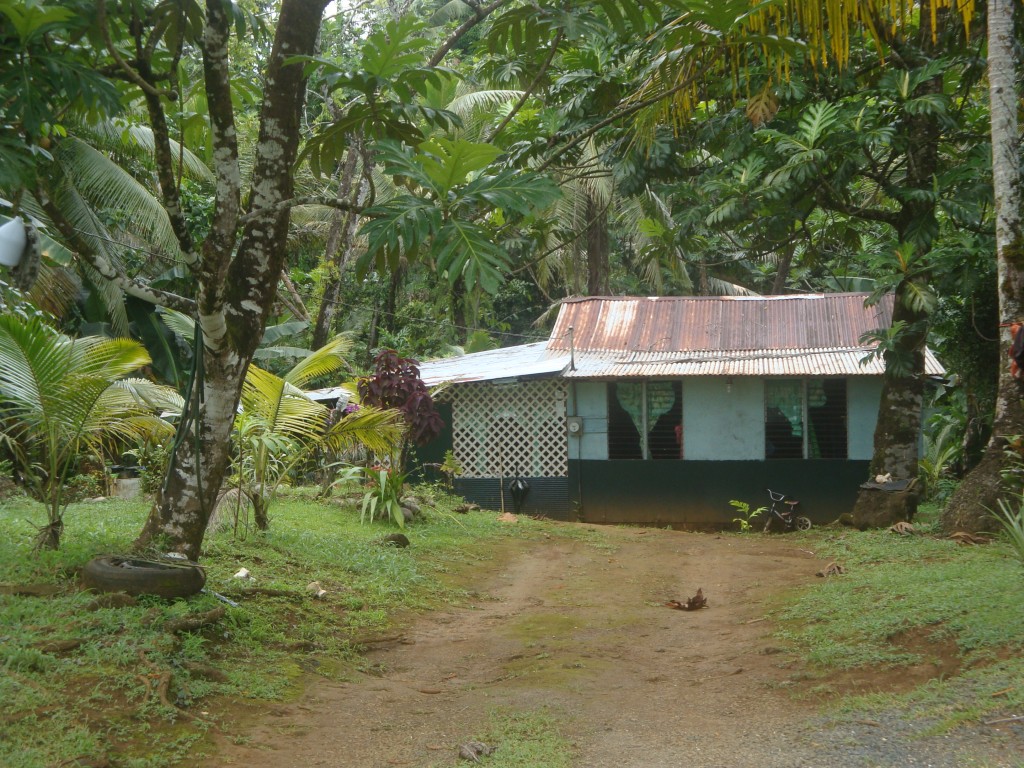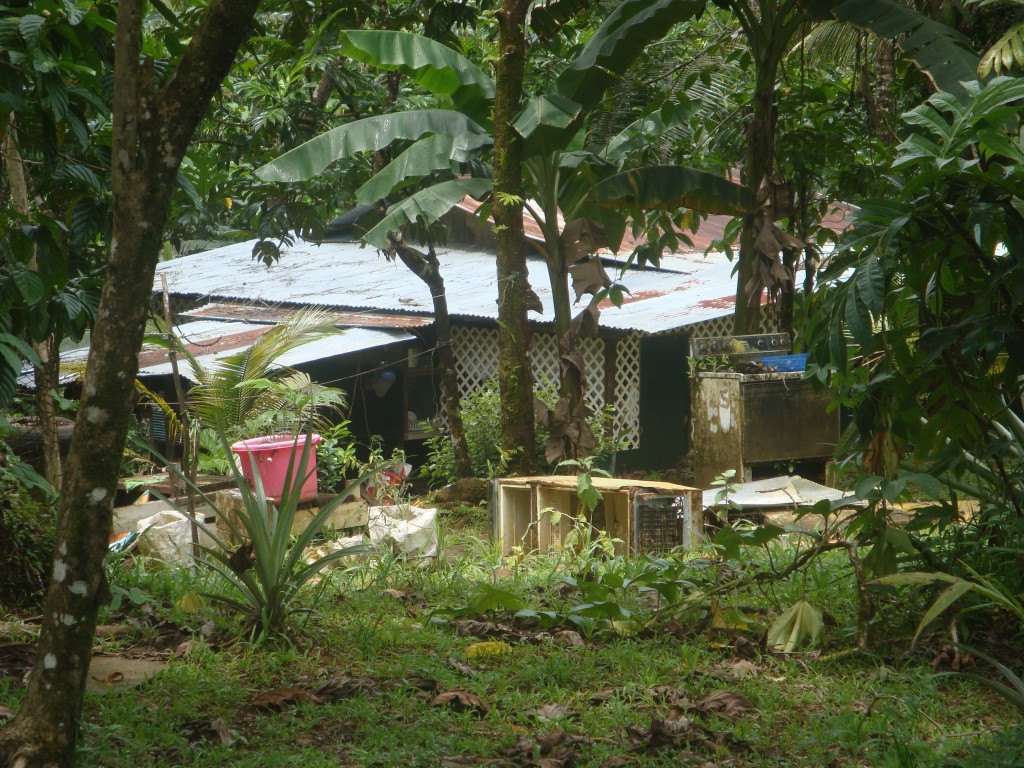It is ironic that in one of the hottest, most humid places on earth (a place with precious little air conditioning, I might add) the domicile of choice is a thick cement enclosure with no ventilation. Like it or not, though, the images in American movies tend to become mod all over the world, and Micronesia is no exception. Comfort be damned—we all want a sweet crib, right? These box-like concrete fortresses have thus popped up all over Pohnpei and are particularly visible in Kolonia, where television sets are the most concentrated. These recently-imported structures have been aptly termed “Western houses” to distinguish them from the traditional architecture of the island, known as “local houses”, in which walls are either non-existent or made of wind-penetrable materials and throughout which ample space is left to allow a cross-breeze.
Perhaps I am biased having lived in a local house, myself, but I will say that there’s nothing like spending a tropical night trapped in concrete to make you value the power of wind. Nonetheless, local or Western, what is most striking about the architecture of Pohnpei is the sheer variety of permutations it embraces. Although I lived just a few minutes’ walk from a veritable Pacific mansion, my absolute favorite structure in Pohnpei was the house of sticks that slowly emerged, piecemeal, from the jungle near our house, like a bird’s nest being carved from its surroundings. One day it was just an area of thin tree limbs, the next it was a vague outline of rooms under a canopy of green vines. You could never be quite sure whether it was humans or nature doing the work. At any rate, from the simple to the, well, not so simple, here’s a look at the houses of rural Pohnpei .
